Haomei Concrete Batch Plant
Founded in 1989, Haomei Machinery has been at its best age for we have rich experience to design and manufacture the right concrete batch plant for you. Perfect supporting equipment including concrete mixer truck, concrete pumping truck, concrete pump trailer, realizes the delivery and use of quality concrete from the batching site to the construction site.
2025年12月9日星期二
2025 Haomei Machinery at PhilConstruct Exhibition #construction #exhibit...
2025年11月24日星期一
Why Is The Haomei Self Loading Concrete Mixer Truck Favored Worldwide
On rural road construction sites in Southeast Asia, infrastructure projects in Africa, and small-scale municipal engineering projects in Europe, construction machinery bearing the "Made in China" label is increasingly becoming a mainstay.
Among them, the self loading concrete mixer, as innovative equipment changing traditional construction methods, is creating a transformative wave in the global market thanks to the technological breakthroughs and cost advantages of Chinese brands.
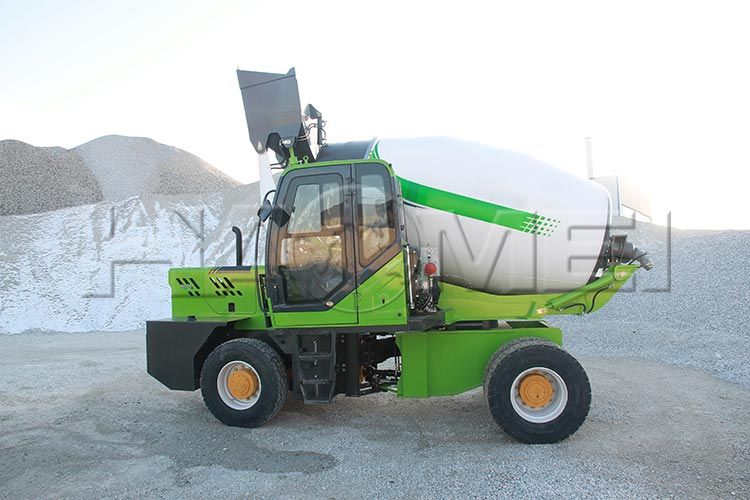
Traditional concrete construction has long relied on a combination of multiple equipment—"mixing plant + loader + transport vehicle"—which is not only cumbersome and labor-intensive but also ineffective in remote areas or complex terrains.
Chinese brands have keenly grasped this industry pain point, reconstructing equipment logic with an integrated approach, and Haomei Machinery has taken this innovative concept to its extreme. Compared to ordinary concrete mixer trucks, Haomei Machinery's self-loading mixer truck's core breakthrough lies in achieving full-process integration of "loading, weighing, mixing, transportation, and unloading," completely overturning the traditional construction model.
In terms of functional integration, Haomei Machinry has solved multiple problems with a single system. The specialized bucket at the front of the equipment acts like a "smart arm," precisely scooping raw materials such as sand, gravel, and cement directly from the stockpile. Its built-in high-precision electronic weighing system controls the material ratio in real time, avoiding errors from manual operation.
During transportation, the mixing drum rotates continuously at a constant speed, producing uniform and fresh concrete upon arrival at the construction site, eliminating the need for a stationary mixing plant.
Facing complex road conditions such as mountain paths and steep slopes, its reinforced chassis and powerful power system ensure stable passage, while the rotating unloading chute precisely delivers concrete to the pouring point. The entire process can be completed by a single operator.
This "one person, one machine, one process" model has increased the efficiency of rural road hardening projects in Southeast Asia by 40% and alleviated equipment shortages for small-scale water conservancy projects in remote areas of Africa.
Cost control is a key factor for Chinese brands to penetrate the international market, and Haomei self loading concrete mixer truck demonstrates strong competitiveness in this area. For small and medium-sized construction companies overseas, equipment procurement and labor costs are often the biggest burdens.
Haomei's self-loading concrete mixer truck can replace three traditional pieces of equipment—loader, concrete mixer, and transport truck—directly reducing manpower input by over 60%. Simultaneously, the on-site mixing mode avoids waste during initial setting of concrete during transportation, increasing material utilization to over 95%.
Furthermore, the cost-effectiveness advantage brought by the Chinese supply chain allows Haomei equipment to shorten its return on investment cycle by nearly half compared to similar international products. In a municipal maintenance project in Europe, the construction team reduced single-project costs by 30% after adopting Haomei equipment, a figure that has prompted many European and American clients to proactively seek cooperation.
If integration and cost-effectiveness are the "stepping stones," then reliable quality is the "ballast" for Chinese brands to establish themselves in the international market. Haomei Machinery deeply understands the characteristics of construction machinery—"harsh working conditions and continuous operation"—and adheres to high standards for core components.
Haomei's self-loading concrete mixer truck is equipped with internationally renowned brand engines and hydraulic systems, ensuring stable operation in extreme environments such as high temperatures and dust storms; the mixing drum uses high-strength wear-resistant steel, extending its service life by 20% compared to the industry average; and a precise intelligent control system can monitor equipment operating status in real time, reducing the failure rate.
This "hard power" has earned Haomei a good reputation in overseas markets. In oilfield infrastructure projects in the Middle East desert region, Haomei self loading mixer trucks operated at high intensity for three consecutive months without any problems, and were called "reliable partners in the desert" by the local construction team.
Original Source: https://www.self-loading-mixer.com/a/why-is-the-haomei-self-loading-concrete-mixer-truck-favored-worldwide.html
What Is Automatic Pump Truck
In the construction industry, concrete pouring efficiency directly impacts project progress. The automatic pump truck, as core equipment, has become the preferred choice for large-scale projects due to their dual advantages of "automation" and "high-efficiency delivery."
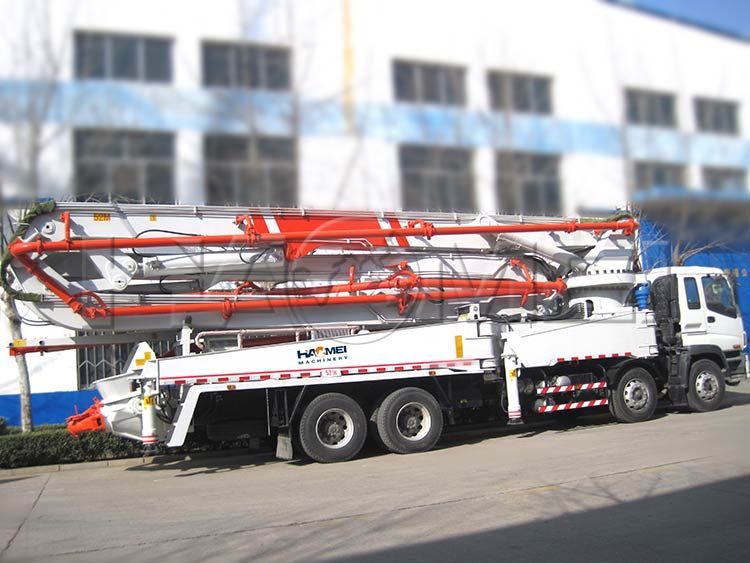
Core Structure
1. Boom operating system
The boom is the "signature component" of an automatic concrete boom pump and a key difference from ordinary concrete pumps. A qualified boom system must meet two requirements:
Multi-section boom + flexible joints: It is typically equipped with 3-6 folding boom sections, primarily made of high-strength steel, enabling 360° rotation and multi-angle extension/retraction. The maximum working radius can reach 30-60 meters, covering complex pouring scenarios such as high-rise buildings and large factories.
Automatic positioning function: Through laser positioning or GPS navigation, the boom end can automatically align with the pouring point, avoiding errors from manual adjustments. This is especially suitable for continuous pouring operations on large-area floor slabs and walls, with positioning accuracy controllable within ±5cm.
2. Concrete Conveying System
The conveying system determines the efficiency and quality of concrete delivery. Core components include:
Dual-cylinder plunger pump: This is the "power core" of the automatic concrete boom pump. Through the alternating movement of two plungers, concrete is drawn from the hopper and pressurized for delivery. The conveying capacity can reach 80-150 m³/h, and it can stably deliver concrete with a slump of 50-230 mm, meeting various engineering needs.
Pipelines and lubrication system: The conveying pipeline must extend synchronously with the boom. The inner wall is made of wear-resistant material to extend its service life. It is also equipped with an automatic lubrication system that regularly lubricates the plungers, seals, and other components to reduce wear and prevent leakage.
3. Automated Control System
The core of "automation" lies in the control system. A qualified automatic concrete boom pump should possess the following features:
One-button operation: Pouring parameters (such as delivery volume and boom angle) can be set via a touchscreen. The system can automatically complete the boom deployment, concrete delivery, and boom retraction processes without repeated manual adjustments, reducing operational difficulty.
Safety protection and fault warning: The system monitors equipment status in real time (such as oil pressure, oil temperature, and boom position). If abnormalities such as overpressure, excessive oil temperature, or boom deviation occur, it will immediately stop the machine and issue an alarm, while displaying the cause of the fault for easy maintenance. Furthermore, it has anti-tipping and anti-collision functions to ensure construction safety.
Features
1. High efficiency
Through automated operation, the automatic concrete boom pump can achieve "one-person operation, fully automatic" delivery, increasing delivery efficiency by more than 30% compared to ordinary pump trucks.
2. High precision
The automated control system's precise boom positioning ensures stable delivery, effectively avoiding errors from manual operation. Meanwhile, the system can adjust the delivery rate in real time to avoid formwork cracking due to excessively fast material supply or cold joints due to excessively slow material supply.
3. High Adaptability
The boom of the automatic concrete boom pump can flexibly adjust its angle and length to adapt to different construction scenarios: in narrow construction sites, the folding boom can reduce the footprint; in high-altitude operations, the boom can extend to a working surface tens of meters high, eliminating the need for scaffolding; in addition, some equipment also has an off-road chassis, allowing it to travel on muddy and rugged terrain, meeting the needs of field projects (such as highways and water conservancy projects).
4. Easy Maintenance
The automated control system not only provides early warning of faults but also records equipment operating data (such as working hours, delivery rate, and maintenance cycle), facilitating users in developing maintenance plans. Furthermore, core components (such as the plunger pump and boom joints) adopt a modular design, allowing for quick component replacement during maintenance and reducing downtime. The whole cement pump truck cost is not high.
Original source: https://www.concrete-pump-cn.com/a/what-is-automatic-pump-truck.html
Planetary Pan Mixer for Concrete Precast Plant
The quality of precast concrete components directly determines the safety and durability of building structures. As the core equipment in the concrete precast plant, the choice of the mixer is considered the "first hurdle to quality."
Unlike ordinary concrete, precast components often require higher strength uniformity, and some involve special concrete mixes such as fiber-reinforced and self-compacting concrete. Certain dry-hard and semi-dry-hard concretes also pose stringent challenges to mixing precision.
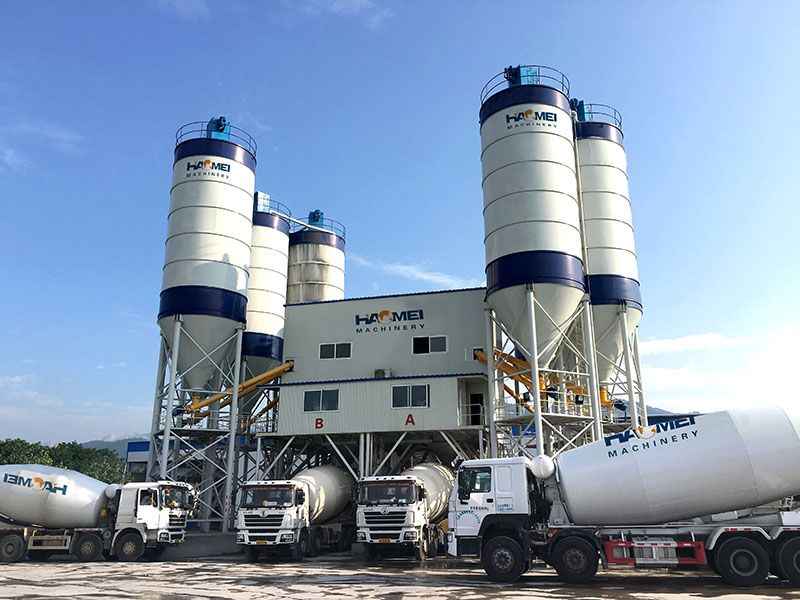
Furthermore, in factory-scale mass production, mixing efficiency, equipment stability, and maintenance costs directly impact operational efficiency. While there are many types of mixers on the market, few can simultaneously meet all these requirements.
The biggest highlight of planetary mixers lies in their dual mixing mode of "revolution + rotation": the mixing blades revolve around the central axis while simultaneously rotating at high speed around their own axis, forming a three-dimensional mixing trajectory.
This motion method completely revolutionizes the mixing logic of traditional mixers. The blades can fully penetrate the material, thoroughly mixing and kneading both basic aggregates like cement and sand, and special components such as steel fibers and mineral admixtures. This fundamentally eliminates dead zones in the mixing process, ensuring a highly uniform particle distribution in every cubic meter of concrete.
Data shows that the homogeneity error of concrete mixed by planetary mixers can be controlled within an extremely small range, which is the core guarantee for achieving the required strength and smooth appearance of precast components.
Besides its uniformity advantage, the planetary pan mixer also offers significant efficiency advantages. Due to the denser mixing trajectory and more thorough action, its mixing time is reduced by nearly 30% compared to traditional twin-shaft mixers, achieving a higher output rate in the same amount of time.
For fiber-reinforced concrete, a common problem in precast component plants, traditional mixers often suffer from fiber entanglement and clumping. The high-frequency shear mixing action of planetary mixers ensures that the fibers are evenly dispersed in the concrete, guaranteeing the crack resistance of the components while avoiding material waste.
It can easily handle high-end mix proportions such as C150 ultra-high strength concrete and RPC reactive powder concrete, and is also compatible with the mixing needs of dry-hard, semi-dry-hard, and self-compacting concrete. It can even be used for mixing special materials such as glass and ceramics. This "one machine, multiple uses" characteristic eliminates the need for precast component plants to change equipment for different types of components, greatly improving the flexibility of the production line.
From an operating cost perspective, planetary mixers also demonstrate significant advantages. Their advanced sealing system effectively reduces material leakage and equipment wear. They have fewer vulnerable parts than traditional equipment, and regular maintenance can be completed in just 30 minutes, resulting in significantly reduced maintenance costs over the long term. At the same time, the efficient mixing mode means lower energy consumption per unit of concrete. Combined with the increased efficiency of mass production, this significantly reduces the production cost per precast component.
Original source: https://www.concretebatchplanthm.com/a/planetary-pan-mixer-for-concrete-precast-plant.html
2025年10月20日星期一
What Is The Application Scope of 1.8m3 Self Loading Concrete Mixer
In the concrete construction industry, not all projects require large-scale concrete equipment. For these applications, a 1.8 m3 self loading concrete mixer is a must-have. It solves the problem of material supply difficulties and avoids the awkwardness of overkill, maximizing efficiency and cost-effectiveness.
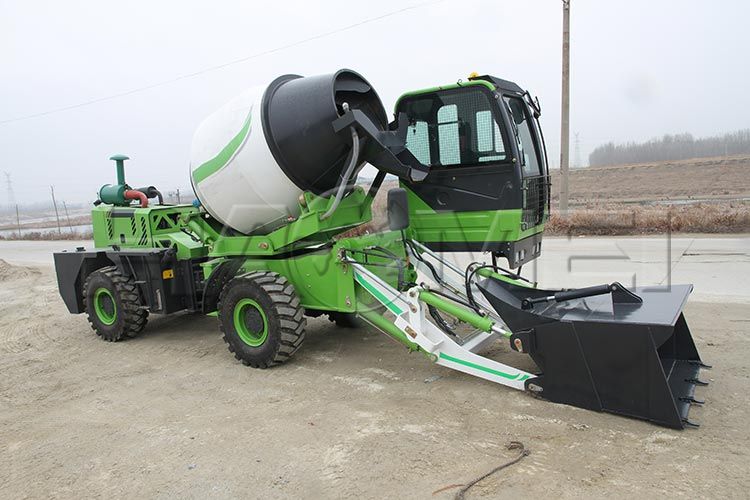
1. Rural self-built houses/small residential construction
Rural house construction often faces two major challenges: One hand, village roads are narrow (mostly 3-4 meters wide), making it impossible for mixer trucks larger than 6 cubic meters to enter; on the other hand, the amount of material used is scattered—casting a single floor requires over 10 cubic meters of material, delivered in 3-4 batches, each batch containing just enough material to fit the 1.8m³ volume.
This vehicle has a compact body (most have a wheelbase of less than 3.5 meters), making it easy to navigate rural alleys. It also features a built-in bucket loading system: no separate loader is needed; the driver can operate the bucket to scoop sand and gravel, automatically mix and add water, and then unload the mix directly at the pouring site. This is three times more efficient than manual mixing and avoids sand and gravel waste.
2. Small municipal repair projects
Projects like hardening the base after renovating sidewalk tiles, pouring concrete around sewer manholes, and hardening walkways in residential green belts typically only require 2-5 cubic meters of concrete per project. Using a large tanker truck not only requires waiting for dispatch but also incurs "idle driving fees," making it extremely cost-effective.
A 1.8m³ self-loading truck is readily available. For example, repairing a 10-meter-long sidewalk base can mix 1.8 cubic meters at a time, completing the job in 2-3 trips. Furthermore, it can stop close to the work site, eliminating the need for wheelbarrows to transport concrete, saving labor and reducing aggregate segregation.
3. On-site secondary structure construction
On construction sites, "secondary structures" such as structural columns, lintels, and post-cast joints often only require a single pour of 0.5-2 cubic meters, but they require continuous material supply (for example, if a floor has 10 structural columns, they must be poured one by one).
Large mixer trucks deliver 6 cubic meters at a time, and by the time the first few are poured, the remaining concrete is almost setting. A 1.8-meter-capacity truck, however, can mix on demand, delivering just enough for one or two structural columns. This ensures fresh concrete and eliminates the need for frequent tank cleaning.
4. Emergency rescue projects
Road pothole repairs, concrete sealing after pipe leaks, and anti-seepage repairs on small embankments require speed—by the time a large tanker truck is contacted, the repair window may have already passed.
1.8m³ self-loading concrete mixer trucks can be driven directly to the emergency site, quickly mixing materials (such as nearby sand and gravel) on-site. For example, patching a 2-meter-wide pothole can be completed in half an hour, saving at least two hours compared to traditional processes.
Why are 1.8m³ trucks so popular with small projects?
Besides being suitable for specific scenarios, the 1.8m³ size also addresses the core needs of small projects:
Cost savings: There is no need to hire a loader driver (for self-loading) or bear the high freight costs of a large tanker truck. One truck replaces three workers (mixing, transporting, and unloading).
Easy to operate: Many models feature one-touch mixing and automatic unloading functions, allowing ordinary truck drivers to master them in just half a day of training, eliminating the need for professional mixer truck drivers.
No waste: Small projects often worry about "leftover material." 1.8m³ is just enough for a small application. Even a small amount can be used for subsequent repairs, unlike large tanker trucks, which often have 3-4 cubic meters of material left over and have to be dumped. Welcome to buy factory price self loader concrete mixer from us.
Original Source: https://www.self-loading-mixer.com/a/what-is-the-application-scope-of-18m3-self-loading-concrete-mixer.html
Will You Choose Concrete Pump Tow Behiend
In the construction industry, concrete pouring is a core process, and the choice of equipment directly impacts project progress, quality, and cost. After comparing various equipment options, many construction teams ultimately choose a concrete pump tow behind. What makes it so preferred?
1. Efficient pouring
The bottleneck in concrete pouring often lies in the "transportation" stage. Traditional concrete trucks, which unload directly, are only suitable for pouring on flat ground and at short distances. However, when faced with situations requiring crossing obstacles, pouring at high-rise buildings, or long-distance transport, unloading becomes difficult and spreading becomes slow. The concrete pump trailer overcomes these limitations:
It is equipped with high-strength conveying pipes that can be flexibly spliced according to construction needs. Its horizontal conveying distance can reach 100-300 meters, and its vertical conveying height can reach buildings over 10 stories. Even within construction sites with obstacles such as walls, foundation pits, and equipment stacks, the pipes can precisely deliver concrete to the pouring site.
Crucially, trailer-mounted concrete pumps offer a stable delivery rate. Conventional models can deliver 30-80 cubic meters of concrete per hour. Furthermore, they minimize concrete slump loss during pouring, reducing construction joints caused by untimely delivery. This not only ensures pouring quality but also compresses a pouring task that originally took 2-3 days to just one day, significantly shortening the project timeline.
2. Controllable costs
For construction teams, "reducing costs and increasing efficiency" is a constant pursuit. The cost-effectiveness of trailer-mounted concrete pumps makes them an ideal choice for small and medium-sized projects:
In terms of equipment investment, the purchase cost of a trailer-mounted concrete pump is significantly lower than that of a concrete pump truck (boom pump), and there are no costs associated with boom maintenance or the high maintenance of the hydraulic system. For teams with an annual construction volume of less than 10,000 cubic meters, the cost of a trailer-mounted pump can be recovered within one or two projects. If renting a trailer-mounted pump, the daily rental cost is only 1/3 to 1/2 that of a truck-mounted pump, significantly reducing the initial financial burden.
In terms of labor and auxiliary costs, trailer-mounted concrete pumps are simple to operate. A single operator can complete equipment commissioning and operation, eliminating the need for additional boom operators. Furthermore, trailer-mounted concrete pumps have low construction site requirements, eliminating the need for reserved space for large equipment and clearing obstacles for the boom truck deployment, indirectly reducing the labor and time costs associated with site preparation.
3. Flexible adaptability
Construction scenarios are complex and diverse, ranging from confined indoor reinforcement to expansive outdoor pouring, and from standard C30 concrete to high-grade, large-aggregate concrete. These requirements place extremely high demands on equipment adaptability. The flexibility of a trailer-mounted concrete pump precisely meets these diverse needs:
In terms of site adaptability, trailer-mounted pumps are compact (typical models are approximately 5 meters long and 2 meters wide), allowing them to fit through narrow construction corridors into indoor spaces, basements, and urban village construction sites. They can even be disassembled and transported via elevator to high-rise floors for pouring, a feat impossible with bulky truck-mounted pumps.
In terms of concrete compatibility, high-quality trailer-mounted pumps are equipped with large-diameter delivery cylinders and wear-resistant pipes, capable of transporting concrete with aggregate sizes up to 80 mm. Whether it's standard commercial concrete, self-mixed concrete, or special concrete with admixtures, they deliver stable delivery with minimal pipe blockage.
Furthermore, trailer-mounted pumps can be used with concrete placing booms, whose 360-degree rotation enables uniform distribution over a wide area, further enhancing pouring flexibility.
4. Easy maintenance + high durability
The reliability of construction equipment directly impacts project progress. Equipment failure can cause concrete to set, delay construction, and result in significant losses. The portable concrete line pump, on the other hand, feature a relatively simple structure. Core components (such as the delivery cylinder, hydraulic pump, and motor) utilize proven technology, resulting in a low failure rate and easy maintenance.
For routine maintenance, operators only need to check the hydraulic oil level, clean the filter, and lubricate key components as required, eliminating the need for complex specialized procedures. In the event of minor malfunctions, replacement parts are readily available and affordable, allowing ordinary maintenance personnel to complete the replacement. This eliminates the need for specialized manufacturers and the long wait times associated with pump truck repairs.
In terms of durability, high-quality trailer pumps feature pipes made of high-chromium alloy, which is highly wear-resistant and has a service life of 10,000-20,000 cubic meters. The hydraulic system utilizes closed-loop control, reducing pressure loss and extending the life of hydraulic components. Many construction teams report that a properly maintained trailer pump can provide stable service for 5-8 years, providing reliable support for long-term construction.
Original source: https://www.concrete-pump-cn.com/a/will-you-choose-concrete-pump-tow-behind.html
What Are Features of The Bolted Cement Storage Silo
In construction, infrastructure, and other engineering fields, cement storage is crucial for ensuring construction efficiency. The bolted cement storage silos, with its flexibility and practicality, is becoming the preferred equipment for many projects.
Core Features of bolted Cement Silos
1. Convenient transportation
Traditional concrete storage silos are large and heavy, placing stringent requirements on road width and bridge load-bearing capacity for transportation. This is particularly challenging in narrow locations like mountainous areas and rural areas.
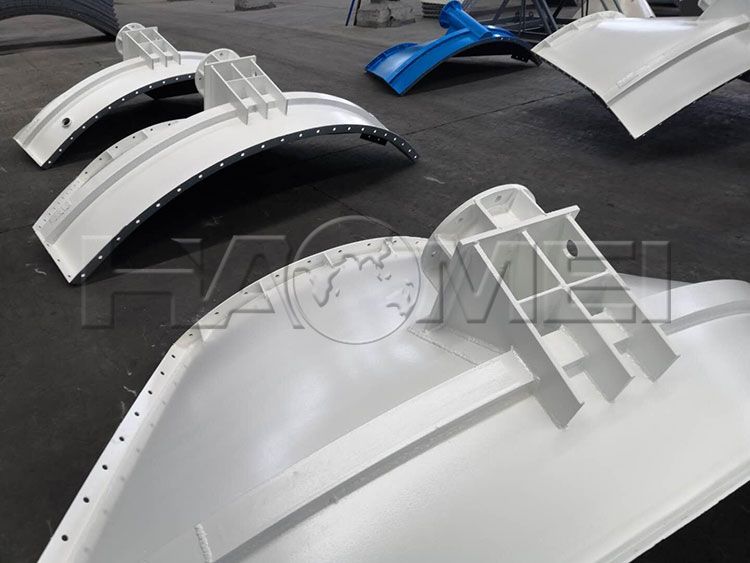
Bolted cement silos, on the other hand, feature a modular design and can be disassembled into multiple components, including the silo body, support structure, feed port, and discharge system. Each component is compact and lightweight, making it easy to transport using ordinary trucks, navigating complex road conditions and significantly reducing transportation costs and complexity.
2. Flexible Installation
Bolted cement silos eliminate the need for large lifting equipment. Assembly can be completed manually with a small crane, and can be completed by a team of two to three people in one to two days. Whether used for short-term construction sites or for permanent storage on long-term projects, they can be quickly put into operation. Disassembly is also easy, allowing for quick transfer to the next site after a project is completed. This ensures high reuse rates and reduces idle equipment waste.
3. Safe storage
Cement is sensitive to moisture and contamination, so our bolted cement silos feature exceptional sealing. The silo is welded from high-quality steel plates, with joints sealed with sealant. Equipped with a rainproof roof and moisture-proof discharge valve, it effectively isolates rainwater, moisture, and impurities.
Our cement silos are also equipped with a material level monitoring device, which uses sensors to display the remaining cement in real time. This device also prevents cement from agglomerating due to long-term accumulation, ensuring storage quality.
4. Environmentally Friendly Design
Currently, environmental protection requirements for construction projects are becoming increasingly stringent, and our bolted cement silos incorporate environmentally friendly concepts into their design. The silo roof is equipped with a pulse dust removal device, which quickly absorbs dust as cement enters the silo via the screw conveyor, reducing dust pollution.
5. Strong adaptability
Bolted cement silos can store not only cement but also dry powders such as fly ash, mineral powder, and stone powder, making them suitable for a variety of applications, including concrete batching plants and dry mortar production lines.
Storage capacity can be flexibly adjusted to meet specific needs, ranging from a small 20 cubic meter to a large 100 cubic meter. Whether it's a small civil construction project or a large infrastructure project, there's a suitable model.
Specifications
1. Capacity
Capacity is the key parameter that determines storage capacity. The bolted cement storage silo for sale typically have a capacity range of 20-100 cubic meters.
20-30 cubic meters: It is suitable for short-term, low-volume projects such as small construction sites and rural self-built houses. A single silo can store 15-22 tons of cement (calculated at a cement density of 1.3-1.4 tons/cubic meter).
50-80 cubic meters: It is suitable for medium-sized concrete mixing plants and municipal projects, with a single silo storage capacity of 35-112 tons, meeting the needs of multiple teams working simultaneously.
100 cubic meters: For large-scale infrastructure projects (such as highway and bridge construction), a single silo can store up to 130-140 tons, reducing frequent material loading and improving construction efficiency.
2. Silo Size
Diameter: It commonly ranges from 2.5 to 4.5 meters. Smaller diameters reduce site width requirements and are suitable for narrow sites. Larger diameters provide more uniform storage space within the silo, reducing dead corners where cement can accumulate.
Height: When disassembled, the height of a single section typically does not exceed 3 meters (for easy transportation). When assembled, the total height is 5-10 meters. The specific height should be determined based on the site's vertical space and the installation requirements of the feed and discharge equipment.
3. Material and Thickness
The main silo body is typically constructed of Q235B steel plate, a high-strength, wear-resistant material that can withstand long-term storage pressure and outdoor weathering. Steel plate thickness varies depending on volume.
4. Supporting Equipment Specifications
Feed System: Typically equipped with a screw conveyor with a diameter of 160-219mm, with a conveying capacity of 20-50 tons/hour, adjustable based on cement usage.
Dust Removal Equipment: Pulse dust collectors have a filtration area of 3-8 square meters and a filtration efficiency exceeding 99%, effectively controlling dust emissions.
Level Meters: They are available in paddle and ultrasonic types, with a measurement range of 0-10 meters and an accuracy of ±5%, providing real-time feedback on the remaining material in the cement silo.
Original source: https://www.concretebatchplanthm.com/a/what-are-features-of-the-bolted-cement-storage-silo.html
2025 Haomei Machinery at PhilConstruct Exhibition #construction #exhibit...
Every year, Haomei Machinery will attend the main international construction exhibitions world wide like Philippines, UAE, Indonesia,etc. We...

-
The portable concrete plant features good mobility, simple foundation and simple structure. What problems can be solved by purchasing ...
-
When the concrete quality is not qualified, the stationary batching plant has been always blamed. In fact, there are many reasons that a...
-
Good maintenance of the self loading concrete mixer truck can save fuel consumption and keep good performance of the engine. According...
